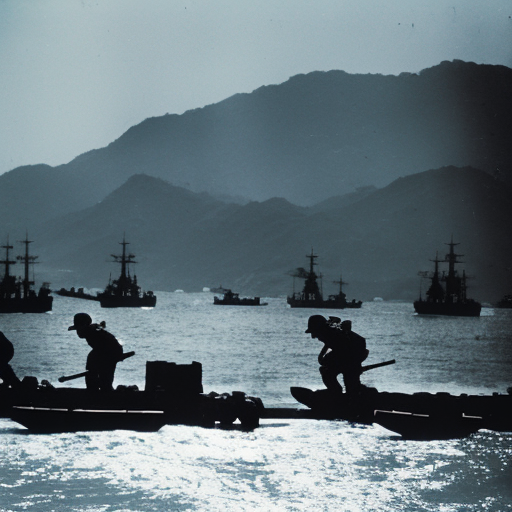Battle of Inchon: A Turning Point in the Korean War
The Battle of Inchon, which took place from September 15 to September 19, 1950, was a decisive military operation during the Korean War. Led by General Douglas MacArthur, the United Nations forces launched a surprise amphibious assault on the port city of Inchon, located on the west coast of South Korea. This bold maneuver successfully cut off North Korean supply lines and allowed the UN forces to regain control of Seoul, the capital of South Korea. The Battle of Inchon is widely regarded as a turning point in the Korean War, as it reversed the tide of the conflict and marked a significant shift in momentum in favor of the UN forces.
The Strategic Importance of Inchon
Inchon was strategically significant due to its location. It provided a gateway to Seoul and offered a direct route to the North Korean capital of Pyongyang. By capturing Inchon, the UN forces could effectively cut off North Korean supply lines and isolate their troops in South Korea. General MacArthur recognized the importance of this opportunity and devised a plan to launch a surprise attack on Inchon.
The Amphibious Assault
The UN forces faced numerous challenges in executing the amphibious assault on Inchon. The tides in the region were extreme, with a difference of up to 36 feet between high and low tide. This posed a significant risk to the landing forces, as they had to time their arrival precisely to avoid getting stranded on mudflats. Additionally, the city of Inchon was heavily fortified, with strong defenses and a well-trained North Korean army guarding the area.
Despite these challenges, the UN forces launched their assault on September 15, 1950. The landing forces consisted of a combination of US Marines and South Korean troops. They faced fierce resistance from the North Korean defenders, but their surprise attack and superior firepower allowed them to quickly gain control of Inchon.
The Liberation of Seoul
With the capture of Inchon, the UN forces swiftly moved to liberate Seoul. The North Korean army, caught off guard and now cut off from their supply lines, was unable to mount an effective defense. The UN forces successfully recaptured Seoul on September 25, 1950, just ten days after the start of the Battle of Inchon.
The liberation of Seoul was a significant psychological blow to the North Korean regime. It boosted the morale of the UN forces and provided a much-needed boost to the South Korean population, who had suffered under North Korean occupation. The successful operation also demonstrated the effectiveness of General MacArthur’s strategy and leadership.
Impact and Legacy
The Battle of Inchon had a profound impact on the course of the Korean War. It marked a turning point in the conflict, as the UN forces were able to regain the initiative and push the North Korean army back across the 38th parallel. The success of the operation also led to a change in the strategic objectives of the UN forces, who now aimed to reunify the Korean peninsula under South Korean control.
The Battle of Inchon is remembered as one of the most audacious and successful military operations in history. It showcased the importance of bold and innovative strategies in warfare and demonstrated the ability of a well-executed amphibious assault to achieve decisive results. The battle also highlighted the leadership and tactical brilliance of General MacArthur, who was able to turn the tide of the war with this daring maneuver.
In conclusion, the Battle of Inchon was a pivotal moment in the Korean War. The successful amphibious assault on Inchon and the subsequent liberation of Seoul reversed the momentum of the conflict and set the stage for the UN forces to push the North Korean army back. The battle demonstrated the importance of strategic thinking and showcased the effectiveness of well-executed military operations. The legacy of the Battle of Inchon continues to be felt in military strategy and serves as a reminder of the power of bold and decisive action.












